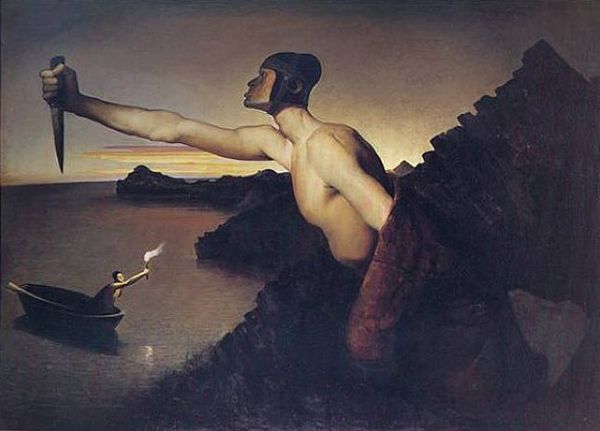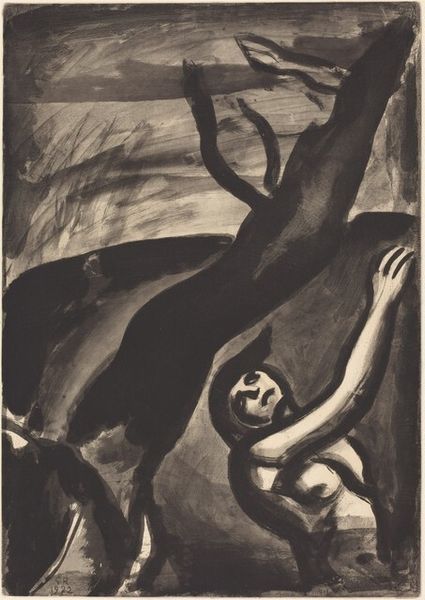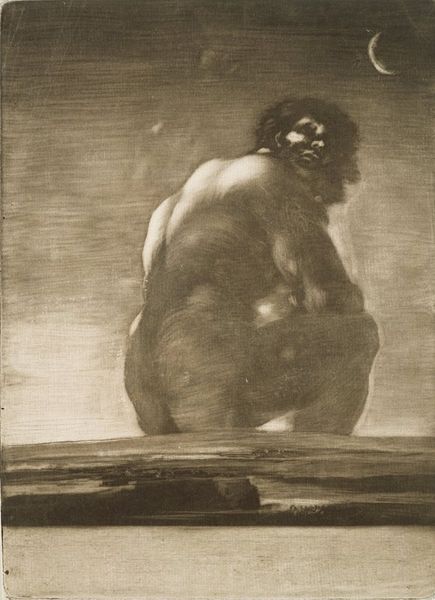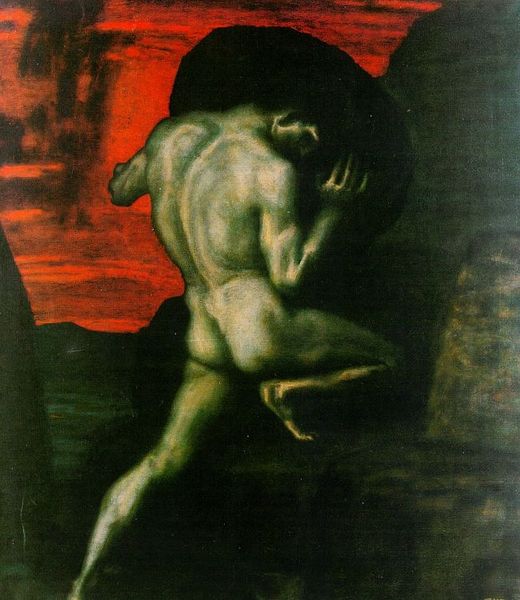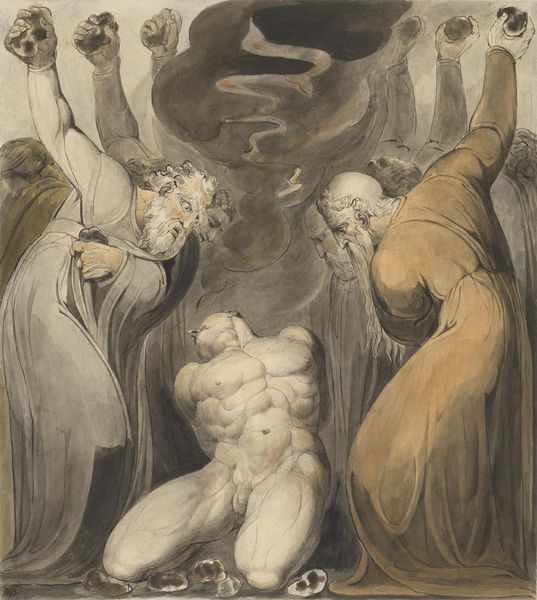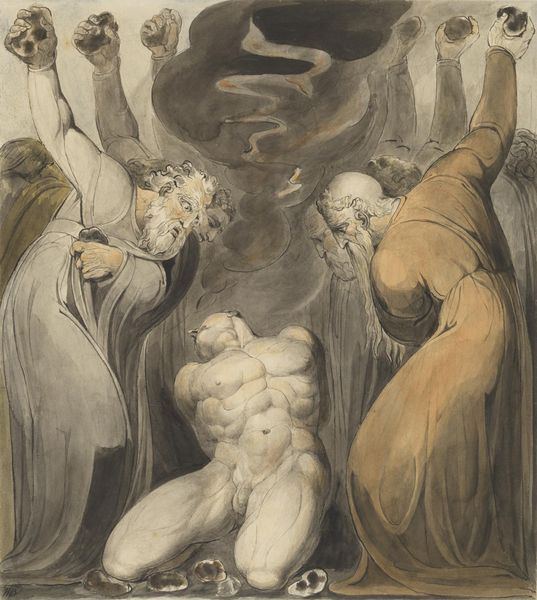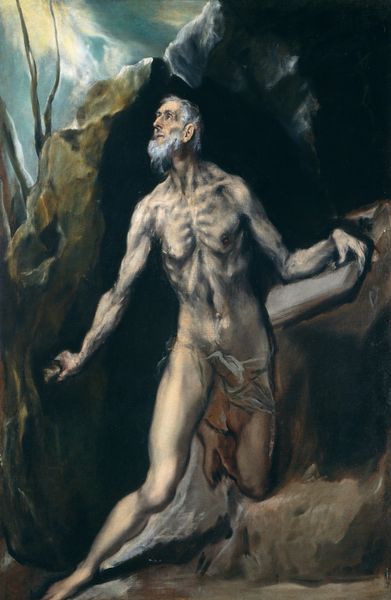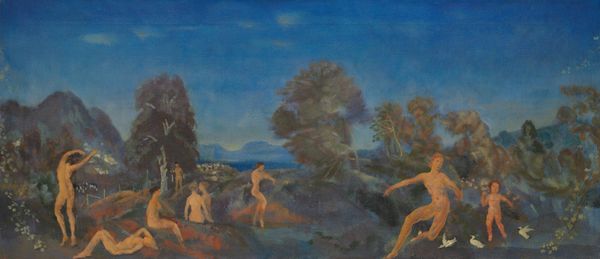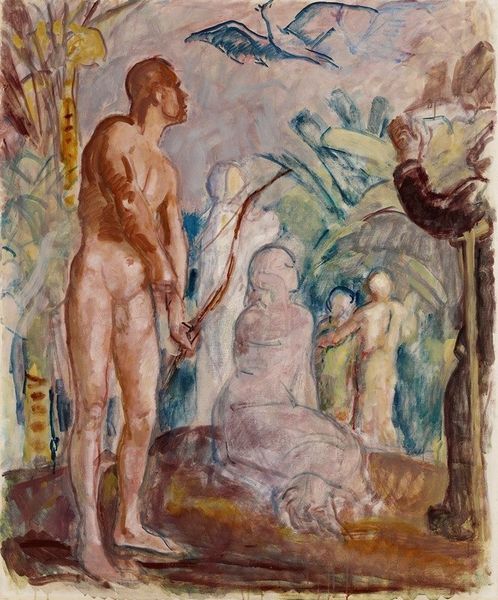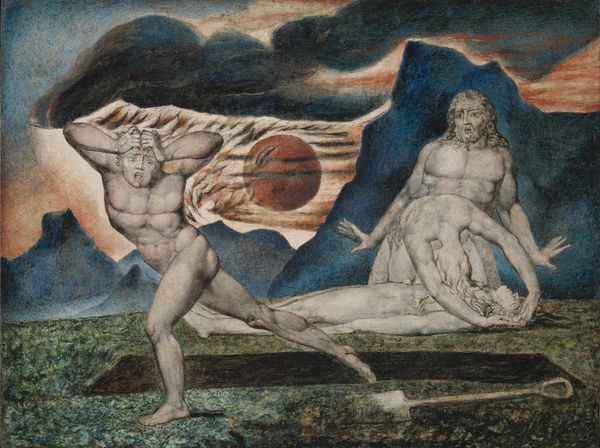
tempera, painting
#
tempera
#
painting
#
landscape
#
figuration
#
surrealism
#
watercolour illustration
#
surrealism
Copyright: Werner Peiner,Fair Use
Editor: This artwork, titled "Moses" by Werner Peiner, uses tempera. The figure dominates the surreal, landscape and somehow evokes both monumentality and melancholy. What do you see in this piece from your perspective? Curator: I see an interesting exploration of materiality and the process of meaning-making within this "Moses." Consider the tempera itself. Why tempera, with its historical associations to both the sacred and the domestic? What kind of labour went into creating the tempera and how does that labor inflect the artwork itself? Editor: That's a great question. I've never thought about it that way. Curator: Right, and notice the subject, Moses, a central figure associated with social structures and law giving. Consider the social and political backdrop in which Peiner made this; thinking about production under the Nazi regime could explain the almost brutish way the human figure seems merged with the materials of the rockface on which it stands. What societal structures were the materials used here upholding? Editor: So you are suggesting the materials were used as part of a bigger social control and agenda? Curator: Precisely. Consider also how the 'landscape' style flattens and simplifies a space once rich with detail and texture; labour reduced to its most schematic! Even 'Moses', weighed down, becomes more symbolic tool for something else. Editor: I’m struck by how much I've learned about considering art as an artifact rooted in specific historical contexts. Looking beyond its immediate aesthetic qualities really enriches my understanding of the artwork! Curator: Indeed. Recognizing art’s engagement with material and socio-historical settings, instead of divorcing artworks from labour conditions or histories allows deeper insights that are missed with formal aesthetics alone.
Comments
No comments
Be the first to comment and join the conversation on the ultimate creative platform.
